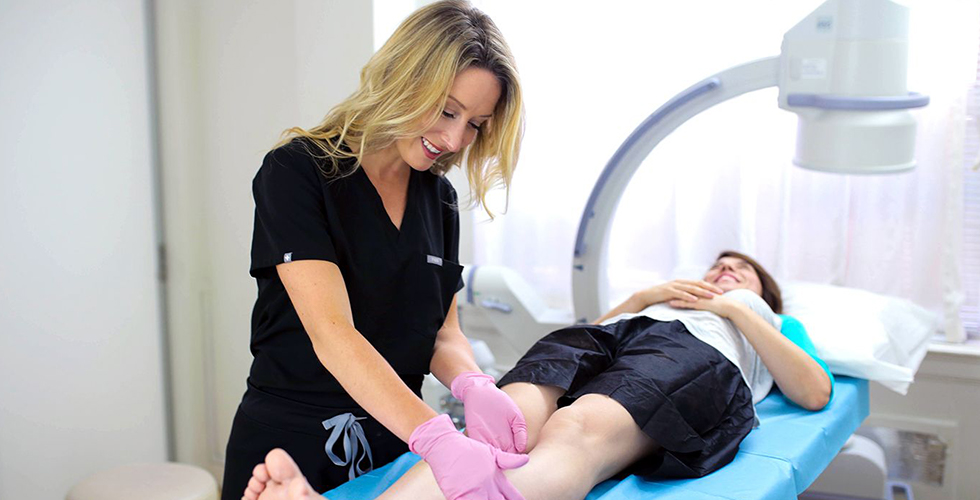How to reverse varicose veins?
If your varicose veins are bothering you, making lifestyle changes may help. Though varicose veins may not be painful for everyone, they can be unsightly and uncomfortable. Furthermore, varicose veins can also cause leg pain, leg heaviness, leg cramps, restless leg syndrome, and other problems associated with underlying chronic venous insufficiency.
Varicose veins usually happen when your vein valves collapse. In healthy veins, the valves act as one-way doors to ensure smooth blood circulation to the heart against the force of gravity. The collapse of vein valves leads to backward blood flow, vein dilation, and the eventual formation of spider veins and varicose veins.
As such, you can reverse the symptoms of varicose veins or prevent the condition from worsening by improving blood circulation. Lifestyle changes won’t treat varicose veins, but they’ll prevent the symptoms from escalating. If you want to improve the appearance of your veins, here are five changes you can make:
- Wear compression stockings: Compression stockings are a type of support hose that help to prevent blood pooling in your legs. They’re often recommended for people who have varicose veins or who are at risk for developing them.
- Exercise: Exercise is important for maintaining good circulation and preventing varicose veins. While any type of exercise is beneficial, you may want to focus on activities that work your calf muscles, such as walking, running, or cycling.
- Elevate your legs while sitting: If you spend a lot of time sitting, try to elevate your legs every so often. This will help to keep the blood flowing in your legs and reduce the risk of developing varicose veins.
- Avoid sitting or standing still for long periods: Standing or sitting for long periods of time can cause blood to pool in your legs, which can lead to varicose veins. If you have a sedentary job, make sure to take breaks often and move around as much as possible.
- Maintain a healthy lifestyle: Being overweight or obese can put extra strain on your veins and lead to varicose veins. Eating a healthy diet and maintaining a healthy weight is important for preventing varicose veins or alleviating the symptoms of vein disease.
Making even a few of these lifestyle changes can improve the appearance of your varicose veins. However, varicose veins are usually symptomatic of underlying chronic venous insufficiency, which is a dangerous medical condition that worsens with time. As such, you must contact a board-certified vein doctor in Long Island to explore varicose vein treatments.
Long Island Vein Treatment is a group of state-of-the-art medical centers for vein treatment specializing in the latest minimally invasive procedures for spider veins and varicose veins. Our vein doctors always diagnose and treat the root cause of your vein problems, thus ensuring safe, consistent, and long-lasting results with minimal complications.
You can find our state-of-the-art medical centers for vein treatment in West Islip, Jericho, and Hampton Bays. If you’re close to the north shore of Long Island, you can visit our vein treatment center at 350 Jericho Turnpike Suite 1A. Please schedule an appointment at your nearest medical center for vein treatment in Long Island.

How to treat reticular veins?
Reticular veins are the larger blue or purple veins visible just under the surface of the skin. They are part of the venous system, which carries blood from the body’s tissues back to the heart. However, unlike healthy veins, reticular veins are dilated and may bulge out of the skin’s surface because of excess blood accumulation.
The following are some of the most effective treatments for reticular veins:
- Compression stockings: These stockings apply pressure to the veins and promote blood flow to the heart. They can also prevent blood from accumulating in leg veins, thus preventing your reticular veins from growing larger. Compression stockings can’t treat reticular veins, but they can prevent the symptoms from worsening.
- Endovenous laser ablation: This procedure uses a laser to close off the diseased vein responsible for your vein problems. The accumulated blood reroutes into healthier leg veins to restore effective blood circulation to the heart.
- Sclerotherapy: This procedure involves injecting a chemical solution into the veins to make them collapse. The reticular veins shrink, get metabolized by the body, and fade away.
- Ambulatory phlebectomy: This is a minor surgical procedure to remove larger reticular veins. The vein doctor makes small incisions on the skin’s surface to physically extract the reticular veins using hook-like devices.
Can varicose veins just go away?
If you have varicose veins, you may be wondering if there’s anything you can do to get rid of them. Unfortunately, varicose veins cannot go away on their own. However, there are treatments available that can help to improve the appearance of varicose veins and relieve the symptoms.
Varicose veins are caused by weak or damaged valves in the veins. When these valves are weak, they allow blood to flow backward and pool in the veins. This can cause the veins to become enlarged and twisted. Numerous factors can contribute to the development of varicose veins, including age, pregnancy, obesity, and a sedentary lifestyle.
While you may not be able to completely prevent the development of varicose veins, there are some things you can do to lessen your risk. Wearing compression stockings can prevent the pooling of blood in the veins and improve circulation. Exercise and maintaining a healthy weight are also important.
If you already have varicose veins, there are a number of treatment options available. These include sclerotherapy, laser ablation, radiofrequency ablation, and microsurgery. Your vein doctor will carefully evaluate your varicose veins, determine if you have underlying chronic venous insufficiency, and curate a personalized vein treatment plan for you.
